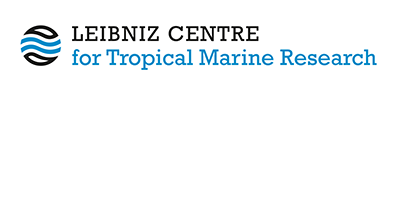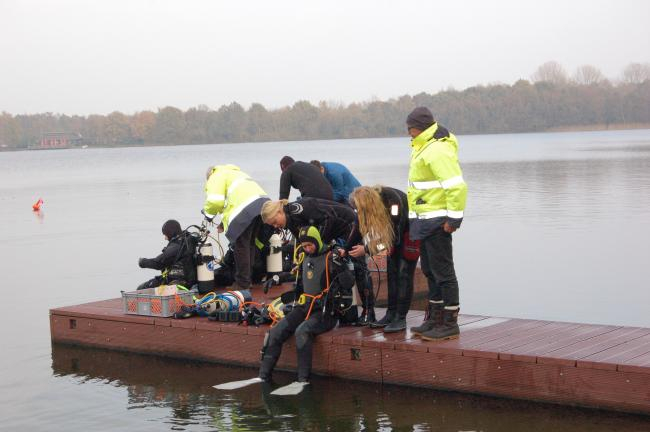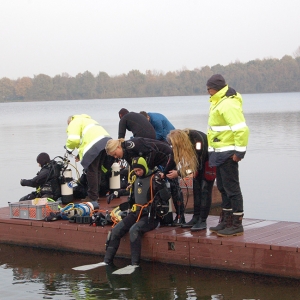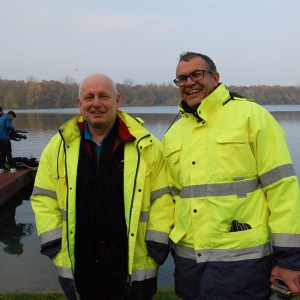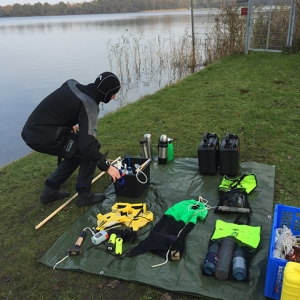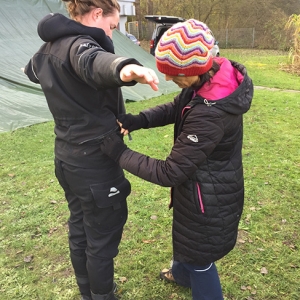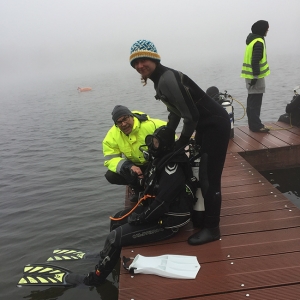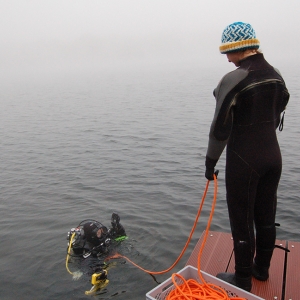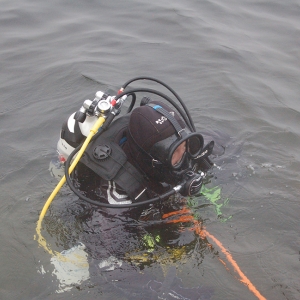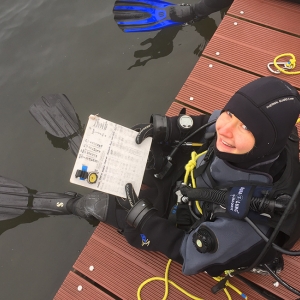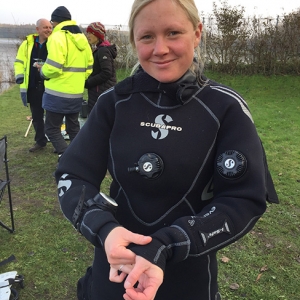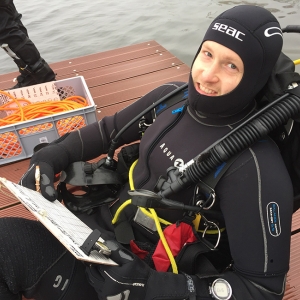23.02.18 | The Leibniz Centre for Tropical Marine Research (ZMT) is training students in the art of scientific diving. The five-week programme and, in addition to a great deal of theory, also includes practical units that demand quite a lot from students. We visited the group and their teachers to find out how they are getting one during the first part of their training at the Unisee in Bremen.
Water temperature: 11° Celsius, air temperature: 0.5° Celsius. The morning mist still hangs over Bremen's Stadtwaldsee. The diving group has already laid out their equipment on the jetty at the DLRG house. Some of them are sitting at the edge of the small pier, already dressed in diving suits, gloves, fins and BCD vests, scuba tanks on their backs. The seven participants probably imagined their training at a tropical marine research institute to take place in warmer climates. But in the first part of the scientific diving course at the ZMT the motto is to grin and bear it in cold Bremen. Needless to say, appropriate attire is the order of the day. All trainees wear dry suits, which even allow for diving in the Arctic at temperatures as low as -2° Celsius.
“When they finish the course successfully the participants receive a globally valid certificate as trained scientific divers. This includes diving in both cold and warm water,” says Dr. Andreas Kunzmann, instructor for scientific diving at ZMT. “But, in the second part of the course, it's getting warmer,” he adds with a smile. “Then we'll go to Eilat in Israel for three weeks, where the trainees will also take their exam."
The right equipment, intensive theoretical preparation and above all a lot of diving experience are prerequisites for becoming a scientific diver. “You need the certification of Brevet CMAS two-star diver or Padi Rescue Diver, must have 30 hours of diving in the logbook, five dives below than 25 meters and 15 dives at a depth of 15 to 25 meters,” explains Dr. Michael Schmid, head of the Scientific Diving Centre at ZMT. The two instructors are supported by Uli Pint, Stefanie Bröhl and Dr. Sebastian Ferse.
Safety is the top priority during training, emphasize Schmid and Kunzmann. The topic is taught in great detail during the theory parts of the course and even more so during the practical part. On Saturdays, for example, various accident scenarios and the correct rescue procedures are simulated from morning through to evening. “This drill simply has to become second nature, there are no ifs or buts,” says Schmid. "This includes first aid such as cardiopulmonary resuscitation (CPR). It is vital and practiced over and over again,” adds Kunzmann.
Michael Schmid and Andreas Kunzmann are instructors for scientific diving certified by the German professional association for accident prevention (Berufsgenossenschaft). “Scientific diving is working under water," says Schmid. “That's the difference to scuba diving.”
So what do the trainees learn underwater? “We teach students to work with the drill under water, for example, to lay out grids for transects, to take samples from the sediment or water or to install an underwater installation,” describes instructor Schmid. “For their work, researchers have to collect a large amount of data under water in order to answer certain scientific questions. Every dive must therefore be precisely and comprehensively prepared and planned at land.”
